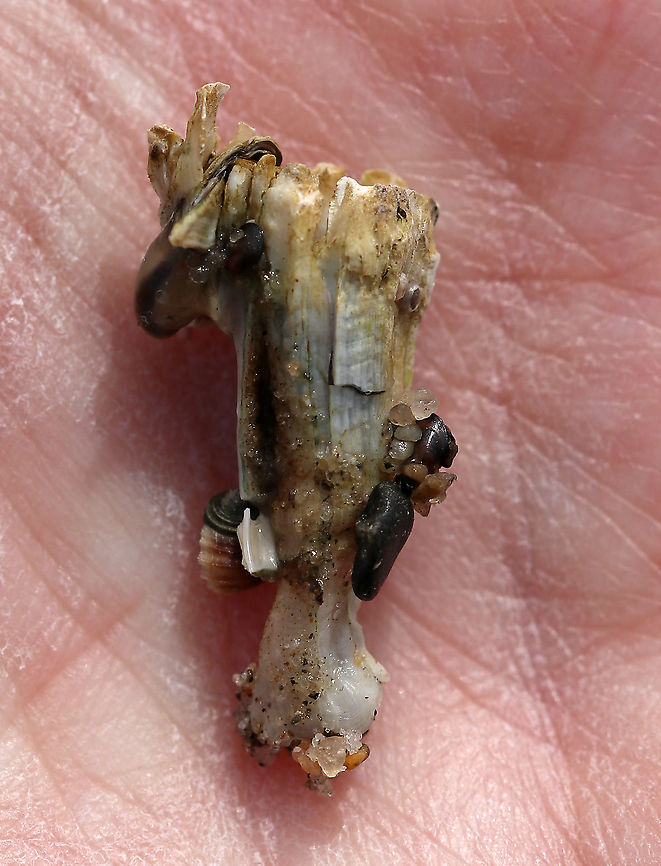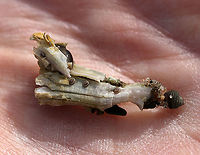
Northern Rock Barnacle - Semibalanus balanoides
This is the crowded form of the northern rock barnacle. When crowded, they take a columnar or twisted shape that can be up to 25 mm long. You can see a bunch of little things attached to this barnacle - mussels and smaller barnacles.
*Note: This barnacle was dead. I wouldn't have uprooted it otherwise.
Habitat: Crowded colony in the intertidal


"Semibalanus balanoides" is a common and widespread boreo-arctic species of acorn barnacle. It is common on rocks and other substrates in the intertidal zone of north-western Europe and both coasts of North America.
Similar species: Symmetrical Sessile Barnacles
By Christine Young
All rights reserved
Uploaded Feb 13, 2020. Captured Jun 18, 2019 08:11 in 1563 Post Rd, Wells, ME 04090, USA.

comments (5)
Their morphology/shape changes when they are overcrowded and they form "hummocks" of tall, densely packed individuals. So, when space is limited and the larvae have to settle in a crowded area, they grow tall and take a column-shape (like a long tooth). The taller they grow, the more likely it is that they will be able to outcompete their neighbors and be the first to filter food particles out of the water because they are more elevated from the substrate. The shorter barnacles are stuck with the leftovers. So, being a tall barnacle is a huge benefit in a crowded space.
But, overcrowding can increase mortality rates as well as they are really tightly packed together and competition for food is tough. However, there are some benefits to crowding. Crowded barnacles rely on support from their neighbors and thus use less resources to build their shells strong. Instead, they can pump energy into increasing their body tissues. Also, they get protection from dessication when crowded, and it's easier to reproduce. So, as long as they can get enough food, crowding isn't that bad for a barnacle.
Here's an image (of a different species) to show the difference between a normal individual and a crowded/hummocked individual:
https://www.researchgate.net/profile/Boris_Lopez2/publication/236013058/figure/fig1/AS:562677518790656@1511164182487/Austromegabalanus-psittacus-specimens-with-different-base-morphologies-subject-to.png Posted 5 years ago, modified 5 years ago
https://inverts.wallawalla.edu/Arthropoda/Crustacea/Maxillopoda/Cirripedia/Balanus_glandulaHighrise1DLC2005.jpg Posted 5 years ago